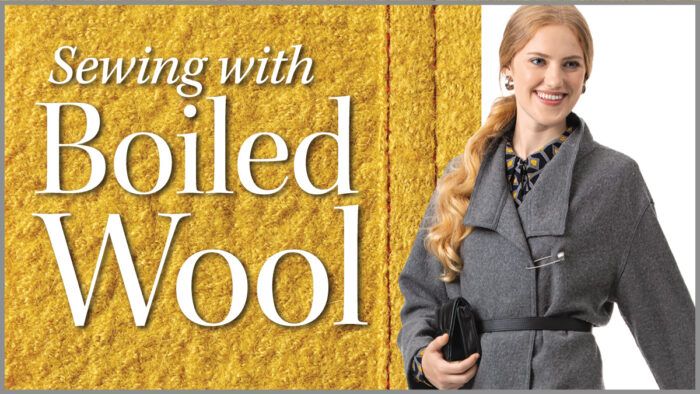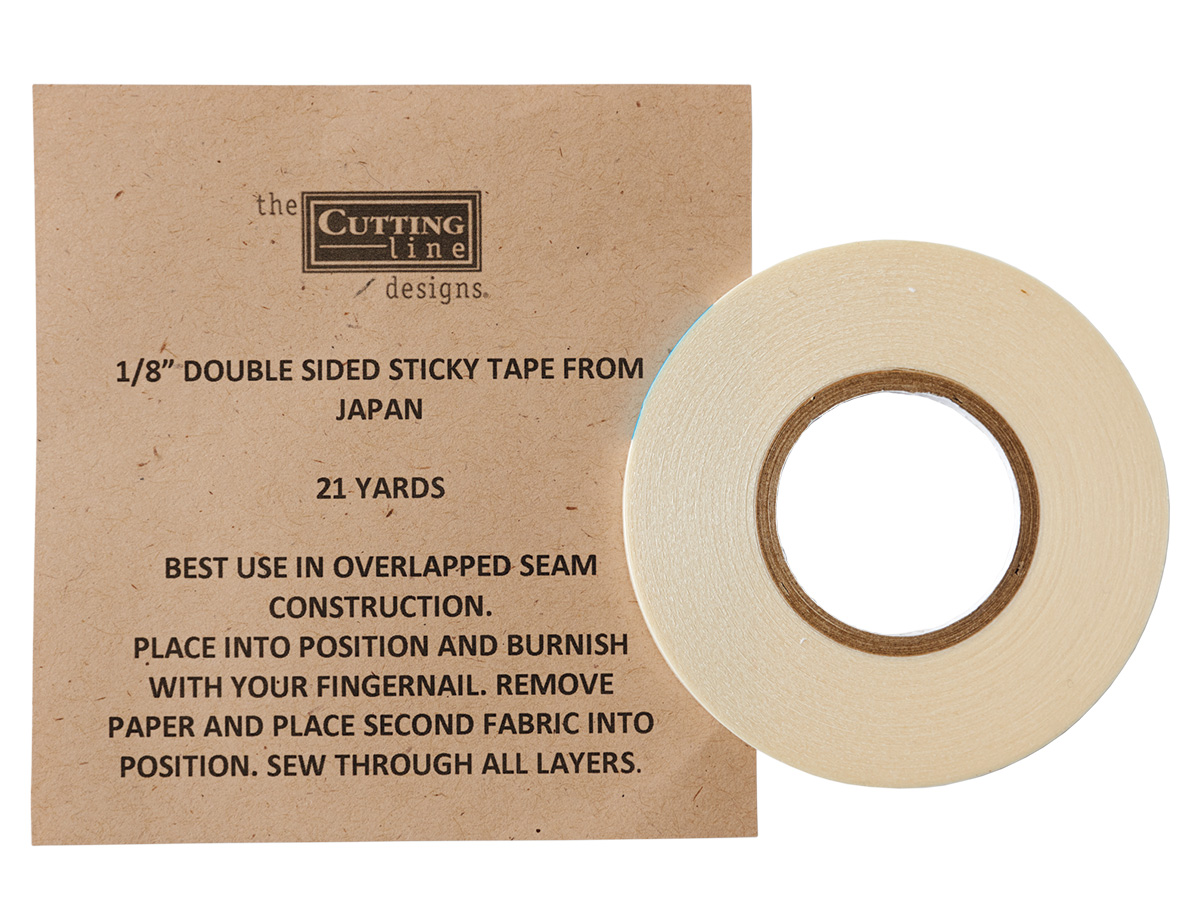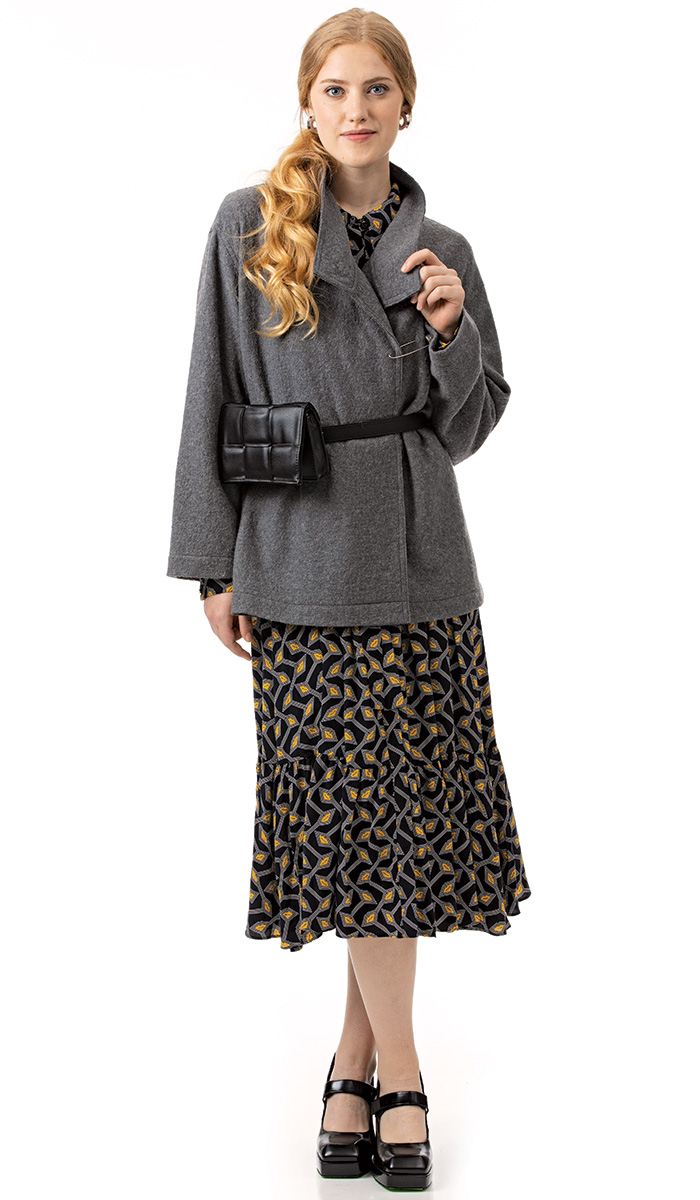Sewing with Boiled Wool
Seam and edge techniques for an elegant finish
Boiled wool jackets and coats look sensational—and expensive. Their textured fabric is timeless and lends itself to silhouettes from body-skimming to full and swingy. With boiled wool, you can create single-layer garments with a classic tailored look, but minimal internal structure. The knitted textile has give, so even a fitted style feels like a sweater when worn. And because it molds beautifully to your figure, fitting is less troublesome than with a stiff woven fabric.
The textile called “boiled wool” by most retailers is a wool/rayon blend. However, its nubby texture and malleable hand make it feel like 100 percent wool. It’s a dream to sew: It needs no seam finishes, it lies flat without curling at the edges, and it is soft and fluid. You’ll find boiled wool in a range of rich, appealing colors, and it is more affordable than you might expect. This means you can create a boiled wool jacket or coat with the style, fit, and details you want.
We’ve developed techniques especially adapted to working with boiled wool. These reduce bulk at seamlines and edges. We’ll explain the general principles of creating a boiled wool jacket you’ll love. Once you learn a few of these alternative construction methods, you can modify your favorite jacket and coat patterns to work beautifully with boiled wool.
Tools and prep
The notions you need are likely in your sewing room already. The only one that’s uncommon is narrow basting tape.
Essential notions
Cutting tools: Fabric shears and a rotary cutter with a new blade; a quilting ruler and fashion curve help guide rotary cuts.
Marking medium: Contrasting thread for tailor’s tacks, which don’t brush off or get trimmed away.

Basting…
Start your 14-day FREE trial to access this story.
Start your FREE trial today and get instant access to this article plus access to all Threads Insider content.
Start Your Free TrialAlready an Insider? Log in


































Would have been helpful to include mention of various weights of boiled wool and wool/rayon blends, because they vary. Some mention of edge finishing techniques for the heavier weights would have been useful, too.